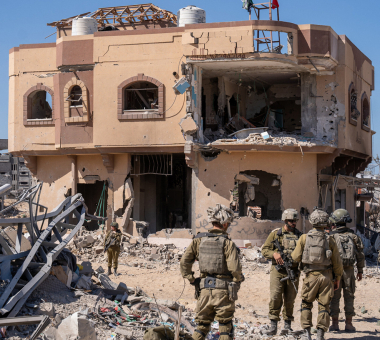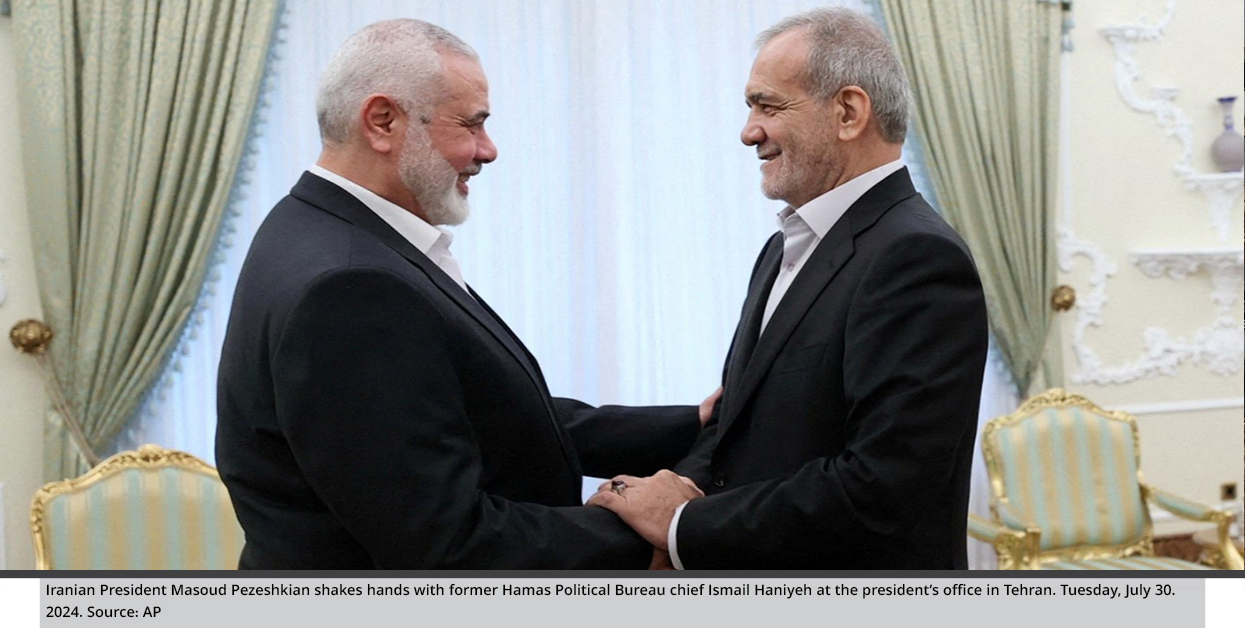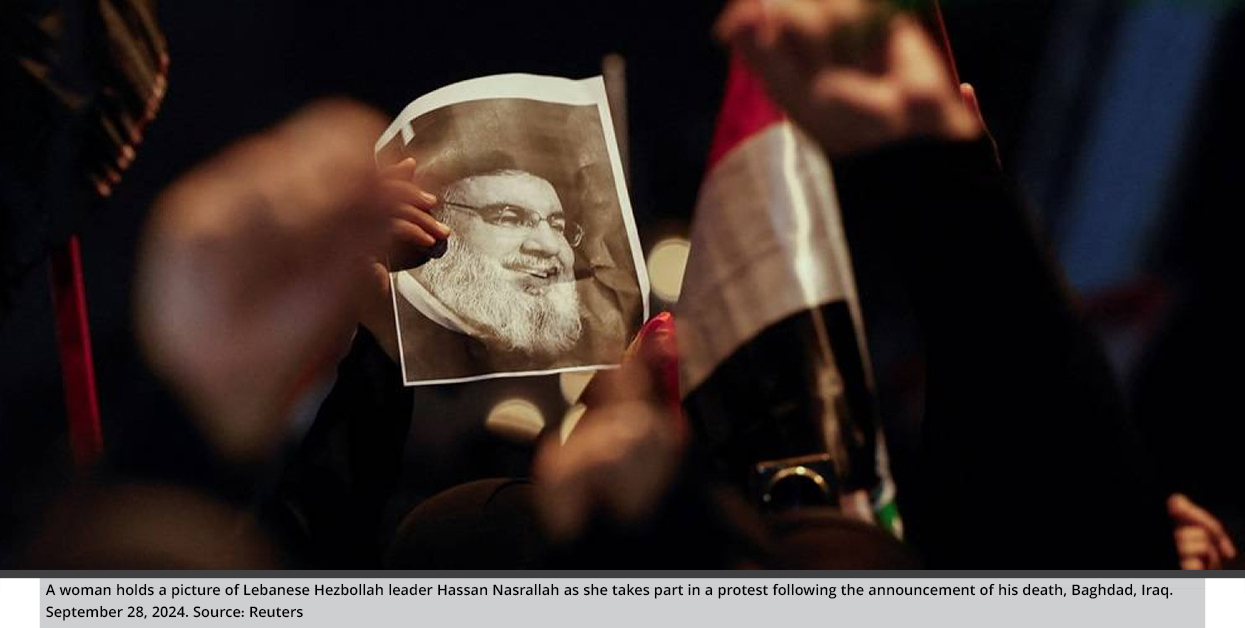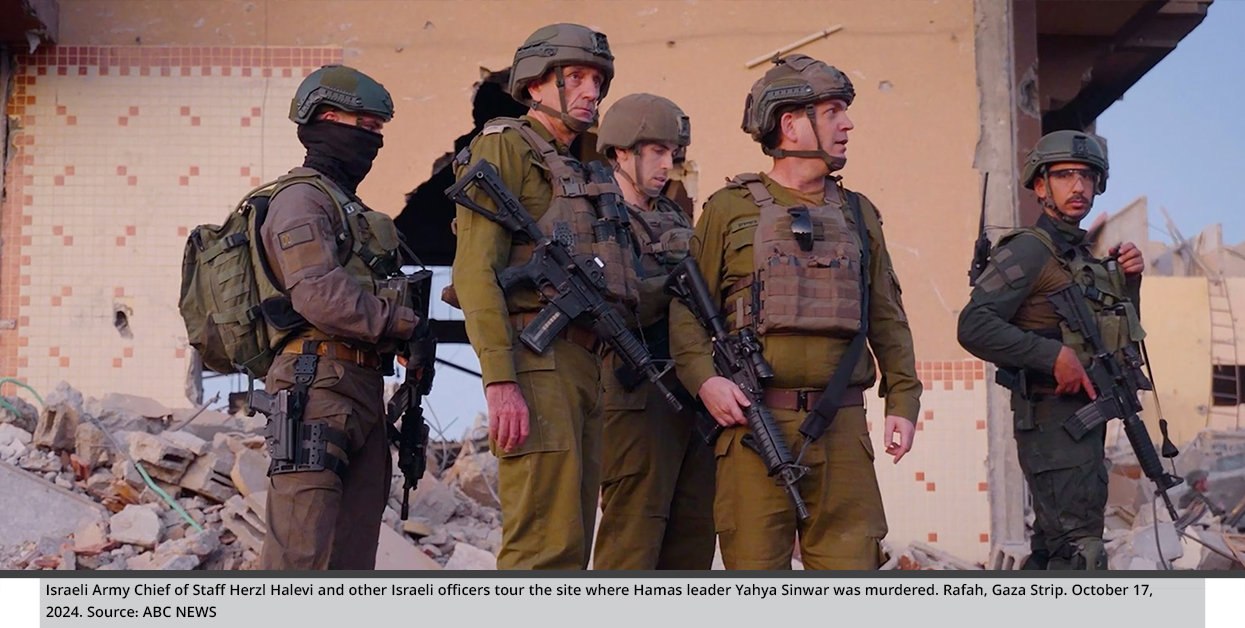Beyond Sinwar: Hamas at a Crossroads
The assassination of Yahya Sinwar places Hamas at a crossroads on various organizational, political, and military levels, especially in the context of the ongoing wars in Gaza and Lebanon. It also raises questions about the movement’s role in the aftermath of the war, which could significantly impact its alliances and relations both domestically and internationally.
by STRATEGIECS Team
- Release Date – Oct 29, 2024

The assassination of the head of Hamas’ political bureau, Yahya Sinwar, on October 16 marks a turning point in the yearlong war in Gaza. It also represents a critical juncture for Hamas, which has a rich history of unprecedented military and political pressures since its founding in 1987.
The death of Sinwar, the principal planner of the October 2023 attacks against Israel who wielded significant political and military influence within Hamas, comes at a time when both Hamas and its military wing are suffering from the loss of several key political and military leaders. This places Hamas at a crossroads on multiple fronts—organizational, political, and military—particularly in light of the ongoing conflicts in Gaza and Lebanon. The movement’s role in the post-war period will likely shape its future alliances and relationships, both domestically and internationally.
A History of Pivotal Moment for Hamas
The assassination of Sinwar is but one of the many pivotal chapters the movement has faced since its inception, within the context of the Palestinian-Israeli conflict. Two years after it was founded, Hamas abducted two Israeli soldiers in the Gaza Strip and in response Israel arrested most of the movement’s leaders and founders, including Sheikh Ahmed Yassin, leading to a leadership vacuum within the organizational structure.
In the 1990s, the movement faced Israeli campaigns of deportation and assassinations that targeted its key leaders. In 1992, Israel expelled more than 400 Hamas leaders and cadres of the movement to southern Lebanon for a full year after the movement killed an Israeli soldier and captured another. In 1993, Israel assassinated a group of Hamas military leaders in the West Bank and Gaza Strip, including one of the founders of the Al-Qassam Brigades, Imad Aqel. This was followed in 1996 with Israel assassinating Yahya “The Engineer” Ayyash and, in 1998, Hamas leaders Mohi Al-Din Al-Sharif and Adel Awadallah.
During the Second Intifada in 2000 and beyond, the movement’s leaders faced the most extensive wave of Israel assassinations. In 2001, Israel assassinated Jamal Mansour, Hamas’s spokesman in the West Bank, and leaders Jamal Saleem and Mahmoud Abu Hanoud. From 2002 to 2004, Israel launched severe attacks against the movement’s top leaders in Gaza, including Sheikh Ahmed Yassin, Abdel Aziz Al-Rantisi, Ibrahim Al-Maqadma, founder of the Al-Qassam Brigades Salah Shehadeh, and chief Qassam engineer Adnan Al-Ghoul.
In the following years, more leaders were killed domestically and abroad, including Hamas’s first Interior Minister Saeed Siyam in 2009; deputy commander of the Al-Qassam Brigades Ahmed Al-Jaabari in Gaza in 2012; Mohamed Zouari, who was assassinated in Tunisia in 2016; and, in 2017, Mazen Fuqaha, one of the Al-Qassam Brigade leaders in the West Bank.
Following the outbreak of the war in Gaza on October 7, 2023, the movement entered a new and rapidly intensifying phase of attrition among its political and military leaders. This began with the assassination of the deputy head of Hamas’s Political Bureau, Saleh Al-Arouri, in Beirut in early January 2024, followed by the assassination of the head of the Political Bureau, Ismail Haniyeh, in Tehran in late July. Israel also announced the assassination of the movement’s military leader, Mohammad Deif, in early August, along with several commanders of field units and brigades in Gaza, most notably the deputy commander of the Al-Qassam Brigades, Marwan Issa, in March 2024.

The Uniqueness of Sinwar’s Assassination
Unlike the previous murders of key Hamas leaders, Sinwar’s assassination stands out due to his significant role within the movement, his direct association with the October attacks, and the threats facing the movement nearly a year after those events.
Sinwar was one of the founding members of the early security and military cells of the Islamic movement in the 1980s, before the official establishment of Hamas. He held considerable influence and centrality in both the political and military wings of the movement. He was widely accepted by the different factions within Hamas, especially those in Gaza, prisons and the West Bank, and he played a role in bridging the Hamas movement with the Iran-backed axis. His appointment as head of Hamas’s Political Bureau, succeeding Ismail Haniyeh, symbolized his central role within the movement.
Moreover, the timing and circumstances of Sinwar’s assassination are exceptional, as the war enters its second year amid unprecedented humanitarian conditions and numerous obstacles to reaching an agreement to end the conflict. Complex issues surround the post-war essentials, including reconstruction, governance, and post-Hamas administrative arrangements in Gaza. This occurs alongside a pivotal moment for the Iran-backed “Axis of Resistance,” particularly after a series of Israeli strikes on Hezbollah in Lebanon that culminated in the murder of its leadership and Secretary-General Hassan Nasrallah on September 27, 2024, and his anticipated successor, Safi al-Din Hashem, whose death was confirmed by Hezbollah on October 23, 2024. Israel has also launched a ground military operation in Lebanon, intensifying pressure on Hezbollah and the Axis as a whole.
Thus, Sinwar’s assassination is likely to result in multiple and complex repercussions that could impact Hamas’s organizational structure and decision-making centrality. The effects may extend to its political rhetoric and alliance network, especially as the movement faces a leadership vacuum and a disrupted balance among its four factions—Gaza, prisons, the West Bank, and abroad—in which Sinwar played a balancing role. This places Hamas at a crossroads, where its upcoming decisions and choices of leadership will define the movement’s strategic direction and future.

A Crossroads for Hamas
Sinwar’s assassination raises complex calculations within Hamas, primarily concerning the organizational dynamics of its leadership and ability to choose a figure who commands similar standing or can at least garner acceptance from all factions within the movement. This is especially challenging given that the candidates to succeed him differ in their approaches and stances on the war and ceasefire negotiations, as well as in their network of allies. While the options for succeeding Sinwar are almost limited to two choices, either one places the movement at a crossroads, as each option carries significant future implications for the structure, positions, and orientations of Hamas.
On one hand, the movement may be poised to elect one of its leaders as the new head of the Political Bureau to succeed Sinwar, with the choice likely between candidates from two main factions. One faction, closely aligned with the Axis of Resistance, is represented by Khalil al-Hayya, while another faction more aligned with the Muslim Brotherhood’s ideology includes prominent figures like Khaled Meshaal and Mohammed Darwish, the head of the Shura Council.
Whoever wins the election as the next head of the Political Bureau could significantly influence the movement’s direction and shape its future. For instance, Al-Hayya, a leader from the Gaza region residing abroad, served as Sinwar’s deputy. Their positions often aligned, particularly concerning the war and the relationship with the Iranian-led Axis of Resistance. Al-Hayya is also responsible for the negotiations’ portfolio, and his election would likely mean continuity for Hamas with little to no change in its current stances and policies.
On the other hand, electing Khaled Meshaal or Mohammed Darwish, both based in Qatar, could shift the movement’s center of gravity from Gaza to Qatar and Turkey. This might lead to Hamas’s political rhetoric leaning more toward a readiness for political compromise and further away from the Axis’s calls for military escalation.
In all cases, the next leader of the movement may not be able to follow the “delicate balance strategy” established by Haniyeh. Additionally, they may not hold the same level of influence that Sinwar had over both the political and military wings. This suggests that Hamas’s options after Sinwar could widen the gaps between the movement’s factions, potentially bringing internal differences to the surface.
This is especially likely as the movement faces an exceptional phase in its history. One faction believes that continuing the conflict can sustain the movement, while the other sees political solutions and integration into the Palestinian political system as existential choices and seeks ways to rehabilitate the movement internationally by transforming it into a political organization.
Accordingly, the next head of the movement’s Political Bureau may have very limited ability to impose their own orientations and stances. The faction close to Iran will likely face opposition from the Muslim Brotherhood faction and its approach to the post-war period, especially after the blows suffered by the movement and its loss of control over its base in Gaza. Meanwhile, Khaled Mashal’s faction will face pressure from the military wing, particularly from influential or hardline figures still active in Gaza, such as Mahmoud al-Zahar, Mohammed al-Sinwar, and Ruhi Mushtaha. This could weaken the political leadership’s authority and force it to confront a critical organizational decision.
The other option available to the movement is to form a collective leadership council, or it may have already done so according to various open sources, though no official announcement or confirmation has been made by the movement yet. This step aims to overcome any disagreements or divisions among the movement’s members and factions, and also to avoid the potential assassination of a new leader, which would once again create a leadership vacuum. At the same time, it would ensure representation of the movement’s various factions and maintain the “delicate balance strategy.” This council could include figures like Al-Hayya, Mousa Abu Marzouk, Mashal, and Darwish

However, given the exceptional nature of this phase, the formation of a collective leadership body presents the movement’s organizational structure with multiple requirements and raises several questions. These include methods for selecting members, accepting resignations, voting mechanisms, decision-making processes, representation ratios of different factions, and the extent to which members outside the council, especially the military wing, will abide by its decisions. There is also the question of whether the council will appoint a leader and spokesperson, which brings it back to the initial option of electing a single leader for the movement. In both scenarios, the procedures face a series of complexities.
Furthermore, Hamas’s ability to maintain stability within its leadership council represents a significant challenge itself. The council will not only be subject to internal polarization among its members, but it will also face regional pressures from various influential parties, including Egypt, Turkey, and Qatar, as well as Iran and other members of the Resistance Axis. These pressures may target core issues, such as ceasefire negotiations, as well as lesser matters, such as the movement’s statements and activities.
Finally, the movement is passing through a highly sensitive period, particularly after losing three prominent leaders: Saleh al-Arouri in Beirut, Haniyeh in Tehran, and, most recently, Sinwar in Gaza. It is expected that the movement’s decision-making center will shift from Gaza to abroad, with the influence of different factions likely to evolve based on the developments of the conflict. As pressure mounts on the movement and its military wing, central authority may lean toward the faction closer to the Muslim Brotherhood, positioning it to oversee factions in the West Bank and Gaza from abroad. This situation is reminiscent of the blow Hamas suffered in 1989, which led the movement to relocate its leadership center overseas and to form its first political bureau under Marzouk in 1990.

STRATEGIECS Team
Policy Analysis Team
 العربية
العربية